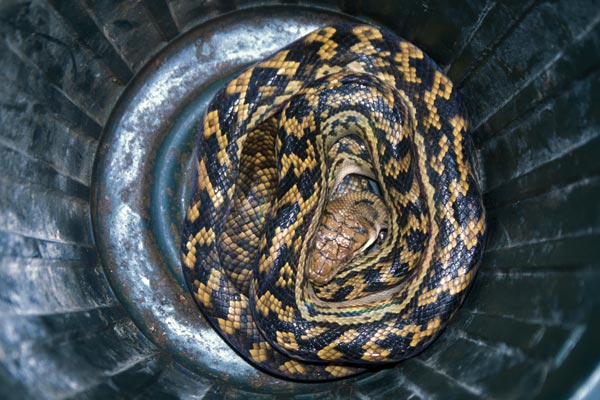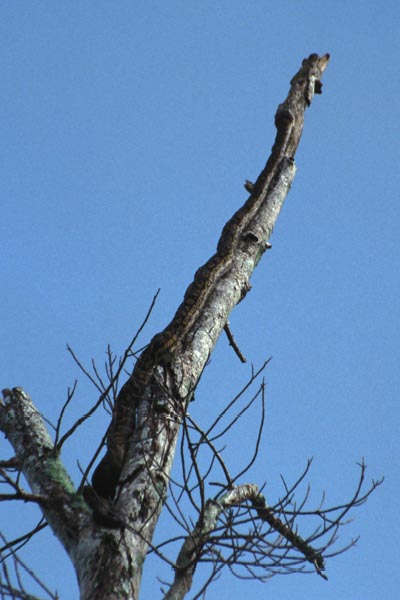
Julia told us to ask whether they had any pythons in the trash can. It seems that the enclosures housing rehabilitating flying foxes are just too tempting for the local python population, and it's not uncommon for a python to find a way into the enclosures or the Bat House building itself. When the staff and volunteers find an unwanted python guest, they maneuver it into a trash can for the day. At the end of the day when they're closing up shop, they drive the python-laden trash can a good distance into the surrounding rainforest and release it there.
So I asked about pythons in trash cans, and sure enough they had one that day. This beauty was estimated to be perhaps eight feet long by its captor (it was a large trash can). Perhaps it doesn't really count as a "wild herp" since it was currently being maintained in a trash can, but only for part of one day. Fortunately I had seen another Australian Scrub Python in the wild earlier in the day, so I didn't have to struggle with my conscience deciding whether to include this species on my website.

Australian Scrub Pythons are one of the largest snake species in the world, though really gigantic ones more than twenty feet long are rarely encountered these days. This one was perhaps ten feet long.
Here is a complete list of the reptiles and frogs I saw on this trip to Australia.
- Simalia kinghorni account on The Reptile Database
- Cogger, H. G. 2014. Reptiles & Amphibians of Australia, Seventh Edition
- Hoser, R. T. 1989. Australian Reptiles & Frogs
- Swan, G. 1995. A Photographic Guide to Snakes & Other Reptiles of Australia
- Wilson, S. K., Knowles, D. 1988. Australia's Reptiles: A Photographic Reference to the Terrestrial Reptiles of Australia